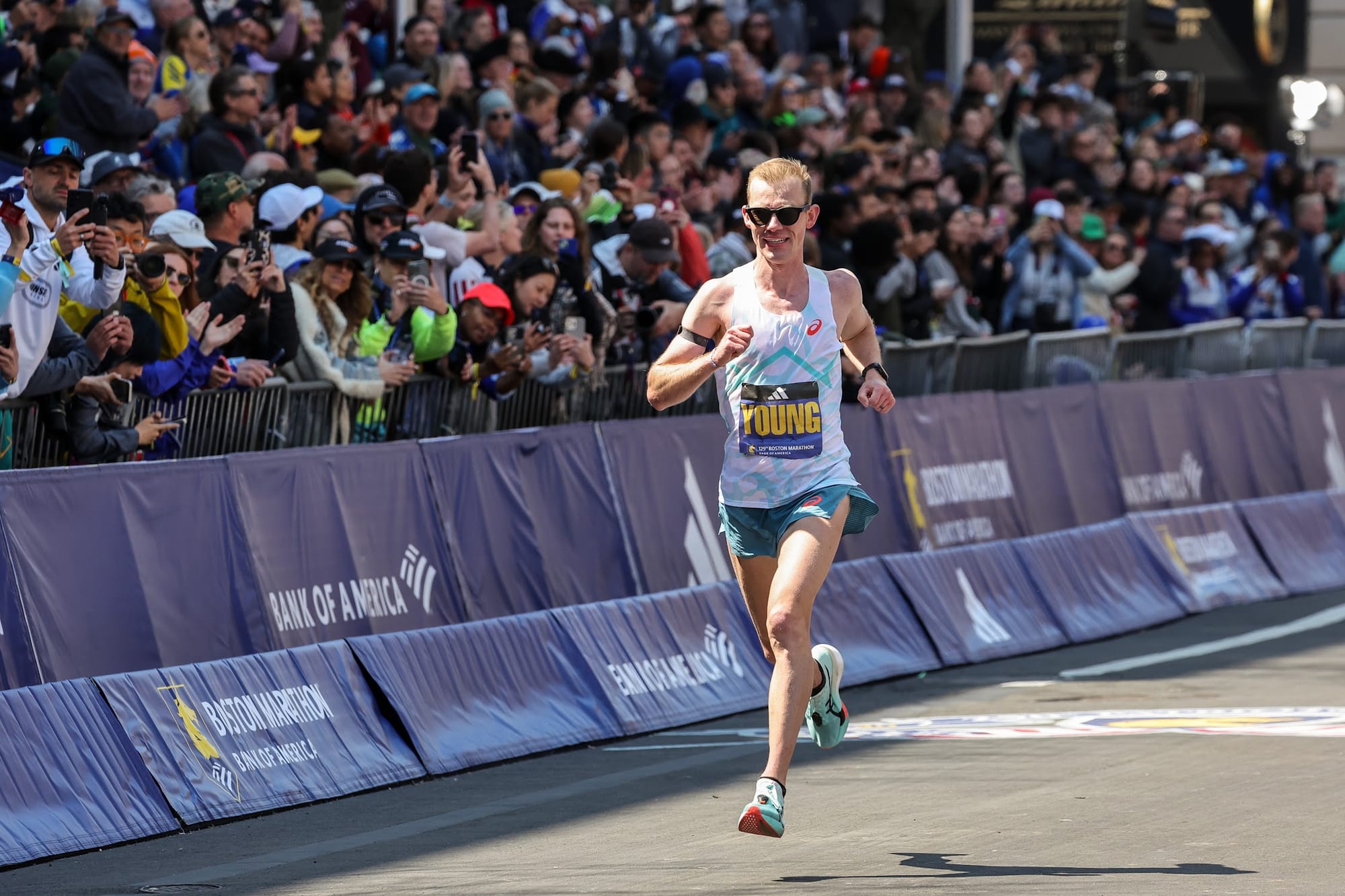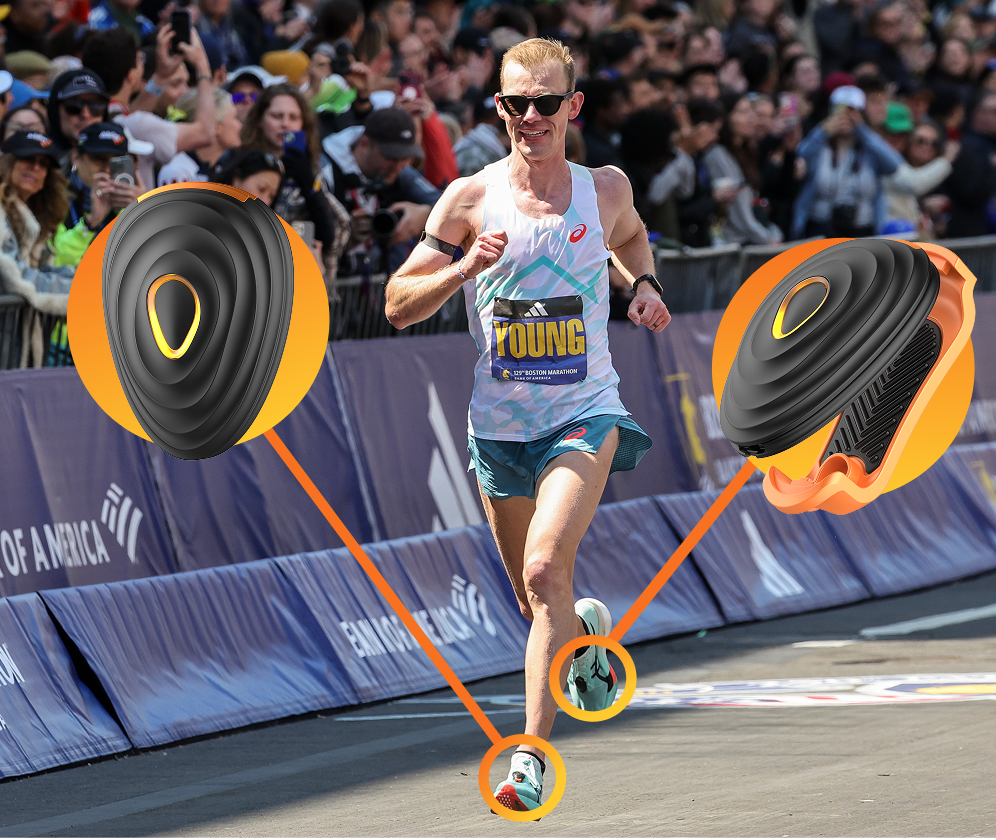Inside the Data: Clayton Young's 7th Place Finish at the Boston Marathon

The historic Boston Marathon has challenged elite runners for over a century with its notorious course profile and unpredictable conditions. This year, Clayton Young tackled the iconic race, securing an impressive 7th place finish among a world-class field.
After outstanding performances at the Paris Olympics and New York City Marathon, Clayton continued his upward trajectory in Boston, demonstrating both the consistency and improvement that define elite marathon performance.
Let's dive into the data from Stryd to understand how Clayton achieved this remarkable result and what it tells us about his development as a world-class marathoner.

Pacing Perfection: Consistency Through Adversity
The most elite marathoners maintain incredibly consistent output throughout their races, and Clayton's Boston performance exemplifies this discipline. His data reveals a masterclass in marathon pacing:
For the first 20 miles, Clayton maintained power output within an astonishing ~1% of his total average power. This level of consistency demonstrates exceptional control and pacing intelligence, especially on Boston's challenging course with its notorious hills.
“Consistency is part of the game. If I can continue to be consistent, it's just a matter of time before I have a breakthrough.” - Clayton Young, via YouTube.
What makes this even more impressive is how Clayton handled adversity. When struck with a calf cramp at mile 20—a moment that derails many elite performances—he managed to keep his power within just 2% of his average until mile 24.
Even in the most challenging section from miles 24 to 26, when the cramp's effects were at their peak, Clayton limited his power deviation to only 3-4% below his average before executing his final kick to the finish. This ability to maintain near-optimal output while managing pain demonstrates not just physical strength, but extraordinary mental toughness.
From Paris to New York to Boston: The Trajectory of Improvement
Perhaps the most exciting story in Clayton's data is the clear pattern of improvement across his recent major marathons:
His Boston Marathon power output represents a 4% improvement from his Olympic Marathon performance in Paris last August and a 3% improvement from his New York City Marathon in November.
This steady upward progression is remarkable considering these races occurred within just a nine-month window. For an athlete already performing at the elite level, finding such significant gains in power output demonstrates both effective training and smart recovery between these demanding events.

This indicates that Clayton's training approach is successfully building upon each marathon experience, creating a foundation for continued improvement.

Balance Insights: The Advantage of Stryd Duo
Clayton's Boston Marathon marked a significant advancement in performance analytics through the use of Stryd Duo's bilateral measurement system with balance metrics and Stryd Footpath. This technology provided critical insights into how his body responded to fatigue and managed the calf cramp that challenged him in the later miles.
The balance metrics revealed subtle compensation patterns that would have been invisible with traditional single-point measurement. This data showed exactly how Clayton was adapting his running mechanics to manage the strain and maintain performance despite the discomfort.
These insights go beyond just explaining this race—they provide a roadmap for optimizing his training and recovery moving forward. By understanding precisely how his body compensates under fatigue and strain, Clayton can target specific areas for improvement and injury prevention in future training cycles.

The Power of Data-Driven Performance
Clayton's Boston Marathon performance reinforces several key principles that benefit runners at all levels:
- Consistent power-based pacing maximizes performance: Clayton's ability to maintain consistent power output, even through challenging sections and physical discomfort, was crucial to his success. This approach to pacing gives runners the best chance to perform at their potential.
- Consistent training leads to measurable improvements: The clear progression in power output across Clayton's recent marathons demonstrates that well-structured, consistent training produces tangible results, even at the elite level.
- Bilateral data provides critical performance & fatigue insights: The Stryd Duo's balance metrics revealed valuable information about Clayton's running mechanics under fatigue, offering a deeper understanding of performance and potential areas for improvement.
Clayton's journey from Paris to New York to Boston shows the power of combining elite-level talent with cutting-edge technology and data-driven training.
For runners everywhere, his experience demonstrates how understanding your capabilities through power data can guide both training and race strategy, helping you find those marginal gains that make all the difference.
As Clayton continues to build on these performances, the future looks bright. With each marathon providing new insights and data points, his trajectory suggests even greater achievements ahead on the world stage.
